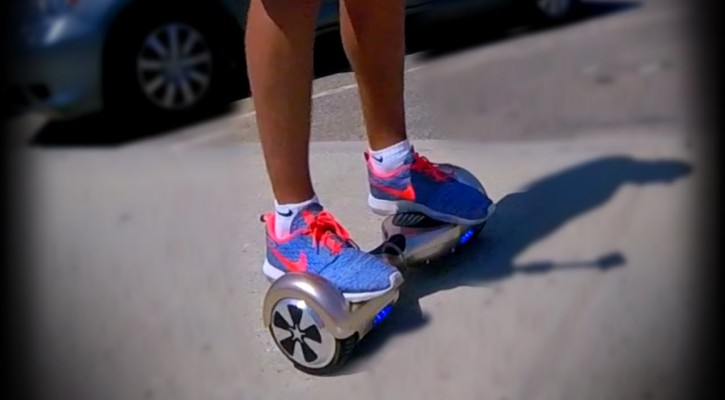
The Dangers Of Hoverboards
January 29, 2016
A week or so ago, as I was driving through my neighborhood, I came up on three kids riding hoverboards in the oncoming lane. The two boys and a girl, who looked to be around 13 years old, were moving along at a pretty good clip. The girl never took her eyes off of her cell phone while she was in my view. I thought, “here’s a crash waiting to happen.”
Hoverboards were the big gift item of the 2015 Christmas season and apparently sold like hotcakes. Just before Christmas, news reports started appearing showing hoverboard batteries that had caught fire and exploded; destroying at least one home in Louisiana. The fires are happening so often that a lot of college campuses banned hoverboards in their dorms.
While the fires are a legitimate cause for concern, a problem we aren’t hearing a lot about is the potential for serious injury among hoverboard users, especially if they take them on the road.
A statement published this week by the chairman of the Consumer Products Safety Commission (CPSC) addressed both the problems of the battery fires and the potential for serious injury by hoverboard users.
At least two teens – one in England and one in Dubai – died when they were thrown from their hoverboards into oncoming traffic. While the CPSC has started collecting data on hoverboard injuries and emergency room (ER) visits, it’s still too early to see if any trends are developing. The only similar activity is skateboarding which leads to an average of 111,000 ER visits by kids under the age of 18 each year. While many of those visits involve sprains, scrapes, and bruises, a significant number also involve traumatic brain injury. In 2014, 28 people were killed in skateboarding related crashes.
One major difference between skateboards and hoverboards is that, unlike skateboards, hoverboards can accelerate on their own depending on the weight and body positioning of the user. New users will have a steep learning curve before they can have total control over the boards.
After a teen in England was killed using a hoverboard, police were quick to remind people that, in the minds of the law, hoverboards are basically Segways without handles and the use of Segways on public property of any kind is illegal. In the US, the technology is so new that most states don’t have laws to cover them yet.
In Florida, if hoverboards are considered to be the same as a Segway without handlebars, they would fall under the law regarding “electric personal assistive mobility devices (EPADs)” and are allowed:
(a) On a road or street where the posted speed limit is 25 miles per hour or less.
(b) On a marked bicycle path.
(c) On any street or road where bicycles are permitted.
(d) At an intersection, to cross a road or street even if the road or street has a posted speed limit of more than 25 miles per hour.
However, if the hoverboard user is under the age of 16, they must wear a bicycle helmet that meets the standards of:
- the American National Standards Institute (ANSI Z Bicycle Helmet Standards);
- the standards of the Snell Memorial Foundation (1984 Standard for Protective Headgear for Use in Bicycling);
- or any other nationally recognized standards for bicycle helmets which are adopted by the department.
Counties, cities and towns can make regulations regarding EPADs and the Department of Transportation can ban their use on roads where they might otherwise be used if it’s felt that the regulations or bans are in the interest of safety.
Children who use hoverboards should:
- Always wear protective equipment such as helmets and knee and elbow pads.
- Always be supervised when riding.
- Restrict their riding to sidewalks and stay out of traffic.
Owners of hoverboards should:
- Never leave the hoverboard to charge overnight without supervision. The charging process increases the risk of a fire.
- Keep a fire extinguisher near the hoverboard charging station.
For additional hoverboard safety recommendations, visit: Statement from the U.S. CPSC Chairman Elliot F. Kaye on the Safety of Hoverboards
